whidbey island
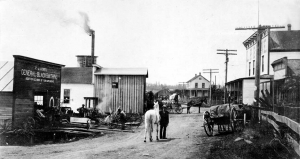
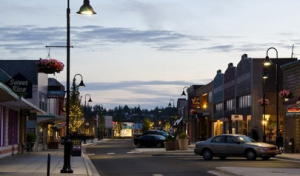 I first heard about Oak Harbor, Washington when my sister, Caryl Reed and her then husband lived there while he was stationed at the nearby naval station at Whidbey Island. Now that my daughter, Amy Royce, her husband Travis and their kids Shai and Caalab live in the Bellingham area of upstate Washington, Oak Harbor has once again come into range of my radar. Oak Harbor was founded in the 1850s when three settlers staked claims where the city now stands. Martin Taftezon, a shoemaker from Norway; C.W. Sumner from New England; and Ulrich Freund, a Swiss Army officer. Freund retained part of his claim, which today is home to his descendants. The city was incorporated on May 14, 1915, and celebrated it’s 100th anniversary in 2015.
I first heard about Oak Harbor, Washington when my sister, Caryl Reed and her then husband lived there while he was stationed at the nearby naval station at Whidbey Island. Now that my daughter, Amy Royce, her husband Travis and their kids Shai and Caalab live in the Bellingham area of upstate Washington, Oak Harbor has once again come into range of my radar. Oak Harbor was founded in the 1850s when three settlers staked claims where the city now stands. Martin Taftezon, a shoemaker from Norway; C.W. Sumner from New England; and Ulrich Freund, a Swiss Army officer. Freund retained part of his claim, which today is home to his descendants. The city was incorporated on May 14, 1915, and celebrated it’s 100th anniversary in 2015.
When we visited Caryl, she took us to see one of the prettiest places in the area, known as Deception Pass. You might wonder why it is called Deception Pass. The Pass is actually a strait between the Whidbey and the Fidalgo Islands and is called “Deception” because George Vancouver was mislead by it into thinking that Whidbey Island was a peninsula. However it came to be, Deception Pass, the area is beautiful. There is also a series of 25 trails in the Deception State Park that I am interested in. I am hoping to be able to hike the area on our next visit to see our daughter and her family.
The town of Oak Harbor is Whidbey Island’s largest incorporated city. It is located in Island County. Oak Harbor was named for the Garry Oak trees which grace its skyline. The growth of Oak Harbor was really brought on by 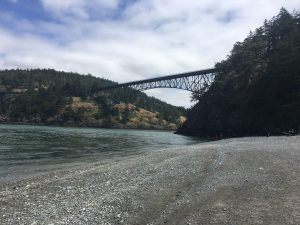
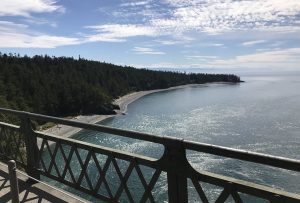 two events…the building of Deception Pass Bridge on July 31, 1935, and the completion of Naval Air Station Whidbey Island on September 21, 1942. After that, Oak Harbor grew from a population of 362 in 1935, to 22,954 in 2018. I enjoyed our visit when my sister lived there, and even though our daughter lives further north, Oak Harbor is not too far away for a visit and maybe a hike.
two events…the building of Deception Pass Bridge on July 31, 1935, and the completion of Naval Air Station Whidbey Island on September 21, 1942. After that, Oak Harbor grew from a population of 362 in 1935, to 22,954 in 2018. I enjoyed our visit when my sister lived there, and even though our daughter lives further north, Oak Harbor is not too far away for a visit and maybe a hike.
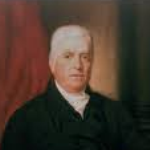
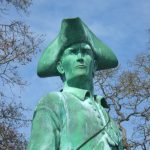 Years ago, when my sister, Caryl Reed lived in the Seattle, Washington area, I remember thinking how strange the names of some of the places were. Now that my daughter, Amy Royce and her family live in northern Washington, the names of those places have come to my attention again. It’s not that the names are all so very odd, but rather that I have a curiosity about how things and places got their names. Places like Whidbey Island, and Puget Sound are just not your typical Indian names like so much of the area, such as Snoqualmie Pass, Issaquah, or Puyallup, which all have Indian meanings. So, how did these other places get their names. Well yesterday, part of the mystery was solved for me. I’m sure some people know what I found out, but surprisingly it may not be as many people from Washington state as you might think.
Years ago, when my sister, Caryl Reed lived in the Seattle, Washington area, I remember thinking how strange the names of some of the places were. Now that my daughter, Amy Royce and her family live in northern Washington, the names of those places have come to my attention again. It’s not that the names are all so very odd, but rather that I have a curiosity about how things and places got their names. Places like Whidbey Island, and Puget Sound are just not your typical Indian names like so much of the area, such as Snoqualmie Pass, Issaquah, or Puyallup, which all have Indian meanings. So, how did these other places get their names. Well yesterday, part of the mystery was solved for me. I’m sure some people know what I found out, but surprisingly it may not be as many people from Washington state as you might think.
The islands of the coast of Washington, which extend for a number of miles inland, have always been of great interest to explorers. Waterways with islands must always lead to passages, right? Well, maybe not. There was an explorer named Joseph Whidbey who led an expedition that embarked on August 8, 1794 to look for a Northwest Passage near Juneau, Alaska. Whidbey’s goal was to locate the passage known today as the Inside Passage to Juneau. He found the passage, but felt that since it was inaccessible most of the year, due to ice in the area, it would not really serve any useful purpose. Of course, as anyone who has cruised to Alaska knows, that passage has become a very useful waterway, especially in the tourism business. Whidbey had also accompanied Lieutenant Peter Puget in small boats in 1792, to explore what is now known as the Puget Sound. On June 2nd of that trip, the men discovered Deception Pass, which was so named because the explorers erroneously thought that Whidbey Island was a peninsula, until the pass proved otherwise. The excursion was part of the Vancouver Expedition, headed up by Captain George Vancouver, who also named Whidbey Island in Joseph Whidbey’s honor.
The Northwest passage did exist, but it would not be Joseph Whidbey, Peter Puget, or George Vancouver who 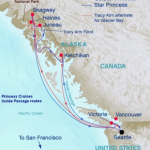
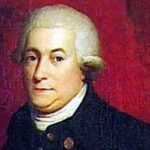 would find it, and it would be a number of years before it was discovered at all. In the end, one Robert McClure discovered the passage in 1850, and Norwegian explorer Roald Amundsen who would first navigate it with a small expedition in 1903 to 1906. The passage was unusable until about 2009 when Artic ice which had prevented regular marine shipping throughout most of the year melted some, moving back to open more waterways for the shipping industry. For me, this was interesting information, because my curious mind wonders about these things like just where did that name come from.
would find it, and it would be a number of years before it was discovered at all. In the end, one Robert McClure discovered the passage in 1850, and Norwegian explorer Roald Amundsen who would first navigate it with a small expedition in 1903 to 1906. The passage was unusable until about 2009 when Artic ice which had prevented regular marine shipping throughout most of the year melted some, moving back to open more waterways for the shipping industry. For me, this was interesting information, because my curious mind wonders about these things like just where did that name come from.

